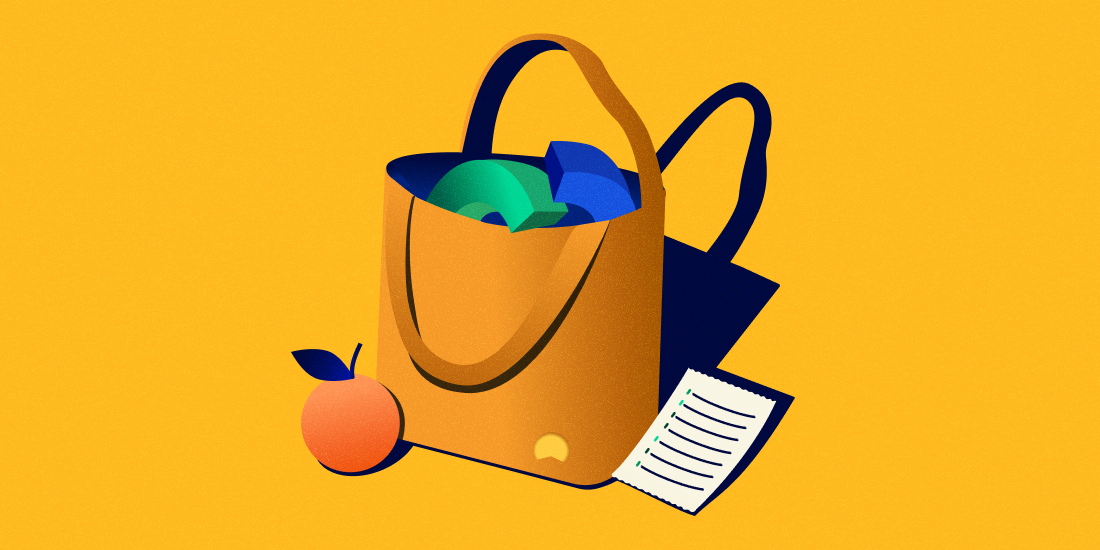Inside the investing kitchen, part 2
See how we source the higher-quality, lower-cost funds that fill up your portfolio.

A lot goes into the making of a single Betterment portfolio. So much that we're spreading out this showcase of our Investing team's work over three parts.
In part 1, we explore how we allocate customers’ investing at a high level, and in part 3, we show how we handle thousands of trades each day to keep their portfolios humming.
And here in part 2, we zoom into a topic that may be a little more relatable for the everyday investor: picking the actual investments themselves. If asset allocation is like refining a recipe, then today's topic of fund selection is all about the sourcing of higher-quality, lower-cost ingredients.
And for that, we turn our eye toward a market of another kind.
Josh Shrair specializes in shopping capital markets here at Betterment, picking the funds that fill up your portfolio's respective allocations. His line of work looked a little different decades ago, back when his step dad was working as a trader on Wall Street. Back then, this level of attention to portfolio construction and fund selection was typically in service of only the ultra wealthy. But now, Josh and team navigate a rapidly-expanding universe of investments on behalf of everyday investors.
Why shopping for funds isn't always so simple
On one hand, the recent explosion of investment options has been great for investors. Increased competition drives down costs and opens up access to newer, more niche markets.
But more choice also leads to more complexity. Take Exchange Traded Funds (ETFs), our preferred building block for portfolios thanks to their transparency, tax efficiency, and lower costs. They bundle up hundreds, and sometimes thousands, of individual stocks and bonds. But even ETFs are multiplying fast. In 2024 alone, 723 new ones launched, bringing the total to nearly 4,000.
To illustrate this abundance, let's say your asset allocation calls for a heaping serving of “Large Cap” stocks, meaning companies valued at $10 billion or more. Nearly 500 ETFs populate this particular corner of the ETF universe. We can narrow that group down to 30 based on the specific exposure we’re looking for, like say U.S. Large Cap companies, or the S&P 500, a list or “index” of 500 of the biggest American companies. But the due diligence is hardly done.
Some ETFs that track the S&P 500 follow it faithfully, while others put their own spin on it, which can open investors up to unintended exposure.
 Josh Shrair (second from left) helps navigate a rapidly-expanding universe of ETFs on behalf of Betterment customers.
Josh Shrair (second from left) helps navigate a rapidly-expanding universe of ETFs on behalf of Betterment customers.
Just as crucially, their costs are all over the place, and higher fees can erode your returns in the long run. That's why the SPDR fund is currently our Core portfolio’s primary way of achieving U.S. Large Cap stock exposure. It offers both a low cost to hold (0.02%) and a low cost to trade (0.03% at the time of writing), making for a low overall cost of ownership.
"Shopping for investments is a little like buying a car," Josh says. "The total cost is way more than the sticker price."
How we calculate cost of ownership
Part of our role as a fiduciary, someone who's legally obligated to act in their clients' best interests, is conducting a deep and unbiased evaluation of the ETFs used in our portfolios. The process Josh and team use is entirely "open architecture," meaning we’re not obligated to use funds from any particular provider. Instead, we strive to select the most optimal ones in terms of cost and exposure.
It helps that Betterment itself doesn't make, manage, and sell funds, which means we avoid the inherent conflict of interest some advisors face when they also act as a fund manager. These firms can be tempted to steer customers toward their own funds, even when a better alternative exists.
So we take pride in the due diligence behind our fund selection, and that begins with our "cost of ownership" scoring methodology. It factors in the two types of costs mentioned earlier: the cost to "hold" or own a fund, also known as its expense ratio, and the cost to trade it.

As you'll see in part 3 of this series, a portfolio is hardly static. Deposits come in. Withdrawals go out. Rebalancing takes place on the regular.
All of this requires daily trading, so the cost of those transactions matters to your investing's bottom line. The cost-to-trade is also known as the "bid-ask spread," or the markup that traders expect when selling a share. It's how they make money, and similar to wholesalers and retailers like Costco, the bigger the fund, the smaller the margins a trader can live with.
Seeking out these value buys is how we're able to deliver globally-diversified portfolios at a fraction of the cost of alternatives on the market today. And we’re never done shopping. Our preferred funds are updated multiple times throughout the year.

Primed for the purchase
There's a lot more to our fund selection methodology, especially for funds that aren’t tied to a specific index, but are instead made from scratch. Some fund managers like Goldman Sachs, where Josh worked earlier in his career, also blend both approaches into a “smart beta” strategy. We offer one such portfolio alongside our Betterment-built collections.
But for the sake of this series, let's pretend for a moment that our tote bags are full, and we're ready to check out. It’s time to meet the team behind every transaction at Betterment.

